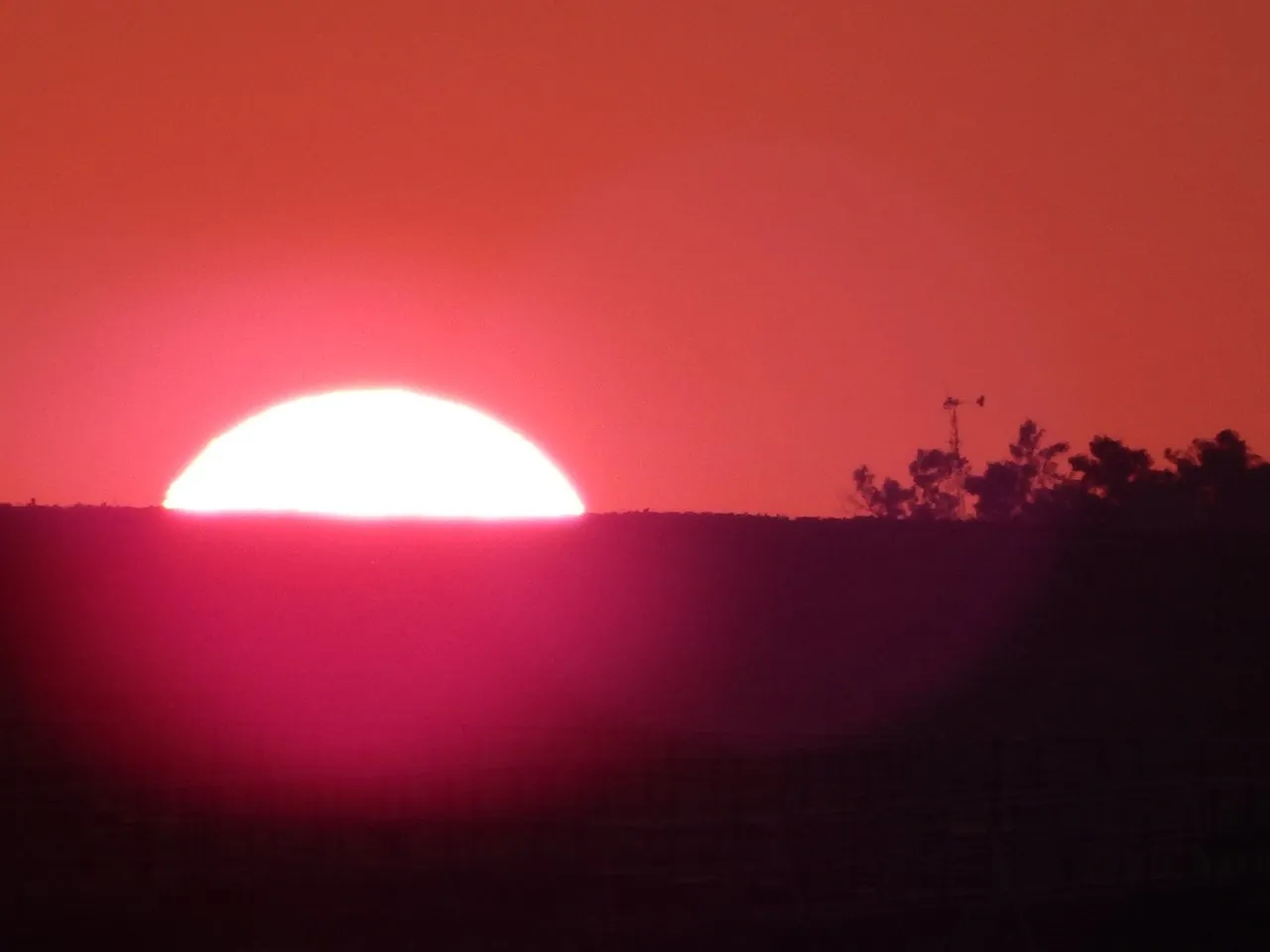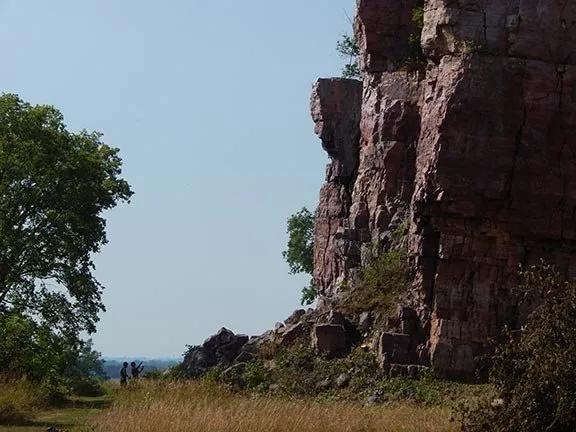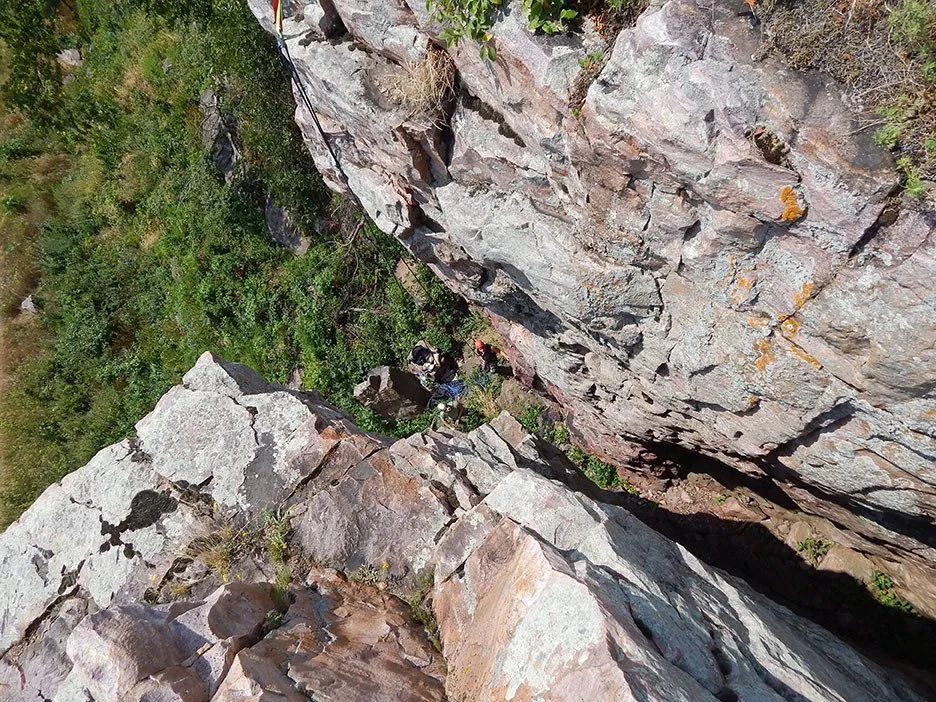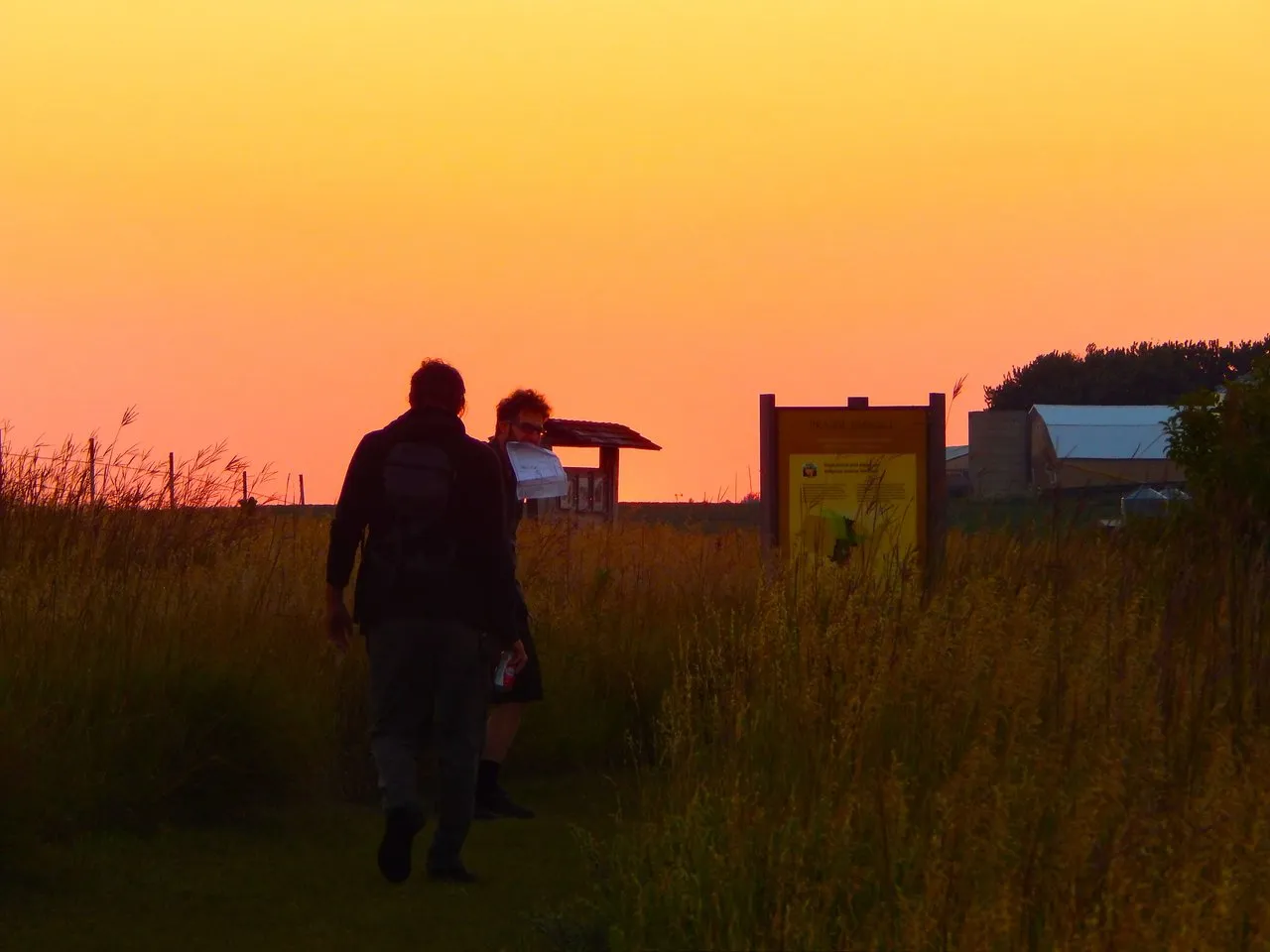
Escaping is an appealing notion. Doing so is all together another thing. Eight AM Saturday morning; nobody stays home to watch cartoons anymore. They are all here, on highway 169 trying to head South. It's a parking lot. This is what we have to get away from.
Today two friends and I try to flee the rush and noise of the city. This traffic isn’t supposed to be here, but then, maybe neither are we. It’s a moderate attempt to reach the southwestern corner of Minnesota to a park called Blue Mounds.
First distraction: after the bustle of the traffic, a Big Yellow Barn, Minnesota’s largest Candy Store. Even in my thirties that inner child cries out, and we’re compelled to investigate. Cash or check only. Our senses overloaded. Will it be chocolates, sour candies, canned vegetables, or seemingly an infinite assortment of random and imaginary soda pop flavors ever invented? I have enough cash on me for a couple honeycrisp apples, some beef jerky, a six pack of bizarre sodas, and a bottle hot sauce with a picture of a skull on the label.
We fill the Jeep Cherokee with newfound consumable products, most locally made, all indulgently edible, and we’re back on the road. No more detours. So the story goes. Half the adventure of getting out of town is getting lost along the way. I wave goodbye to the Jolly Green Giant and we’re driving 80 mph with angry traffic desperate to get to the next parking spot.
Out the car window white cotton ball clouds paint themselves weightless in vibrant blue sky. We decide to take a country road detour. The passing landscape is an expanding horizon of fields, farms, and forests. Golden acres of corn and crop ripple across the horizon. Trees have begun to change the tips of their leaves to reflect the colors of a sunset. All too brief, the calm back road ‘short cut’ is shattered with the merging onto Interstate 90. Now it’s a beeline mad dash for our destination.
We hop off the main vein at the town of Luverne and head north. We’ve finally burst from the bubble of mass commotion and it feels like swirling into a small eddy of a river. Life slows down a bit. A smaller trickle of traffic travels into the center of Luverne. We follow it and search for a place to eat. They have all the same franchises. Each town a little a micro mirrored cookie cut out of the previous one. Mom and Pop shops didn’t much survive the 20th century.
Continuing north out of Luverne my cellphone loses all bars of reception. Now we’re traveling prehistoric. We’re driving through invisible gates that separate the urban from the natural. A knot of stress unties itself. I shiver it off. We enter the state park, welcome to Blue Mounds.

I envision the place one hundred and fifty years ago: wild rolling plains, a prairie land of golden grasses stretching horizon to horizon, flowing like fields of yellow hair, an ocean of dried plant life. The only neighbor being the wind pressing and sweeping down on each blade like a gentle high five. I picture these past expanding plains and the thousands of bison that might have grazed through its territory like guardian minotaurs. Now vanished ghosts too sparse to save the area from the inevitable expansion of human inhabitants.
The state park isn’t that large and bison still do relatively live here. The protected herd graze in a fenced area. Visitors can see from afar the strength and beauty of these magnificent ancient creatures. Bring binoculars.
But! We have not travelled all this way for the prairie vista nor to see these massive bison. Our quest to this region of the state is in search of the stretching Sioux Quartzite rock wall. A remarkable natural phenomena, as if the land above was too soft to hold itself and fell a hundred feet below the protruding eastern exposed face. A rippling wave of stone locked in time and bleaching in the rising sun.

Rock walls like these are like giant waves arching across the surface of the earth: slow moving over the millennium, the shifting, pulling, falling, crumbling, rising cliff faces, true vertical scales of land. These are my waves, impenetrable structures, ripping out of moss and dirt, scaling the white caps of motionless stone.
The blue in Blue Mounds comes from the color the Sioux Quartzite rock of this area was said to appear from a distance. I see no blue in this rock other than the sadness in taming this land. The rock wall holds a distinct pink red as if stained and haunted by the blood of bison herds stampeded off these cliffs. It is an unproven myth that the original Natives of the area used these cliffs to drive bison over the edge. No evidence to this day has proven the tale. Though standing above or below it is easy to see how it could be possible. Perhaps the hunters left no trace of their prey and the walls are the only thing that echo the bison’s fall.
Today this area holds other meaning and activities. A paved walk and bike path follows along the rock wall’s curvature to a parking area. There is a campground on the north end and the area is full of hiking trails where nature goers can vast in a bit of Minnesotan prairie. We are here to climb this natural wonder of rock.
Hands study, fingers memorize: cracks, edges, corners, holes, crimps. Rock climbing requires a meditative quality: clear thought and empty mind. To be cliché, to be one with the rock, let the worries and internal chatter of the mind vanish. Throw it all in the chaotic river and over the falls: forget that lawn that needs to be mowed, that pressing electrical bill, the occupational stresses, that thing I forgot to do, they dissipate as hands and feet challenge gravity, fluid, mind, body, calm, breathing, trusting, levitating.
The motion up and across the face of rock is a dance of gravity in the moment. Exposed, open, outdoors, the breeze, an eagle overhead; the climber finds the vertical path that has no map, no instruction, and no human design. It is the rock’s will that allows us to find placement across its ancient facade.
There are multiple methods of rock climbing. Today we are doing what is called top roping. This is where climbers set up a three point equalized anchor system at the top of the cliff using gear: slings, webbing, cams, tri cams, hex cams, and nuts all wedged in cracks or looped around boulders or trees. The trees are sparse here and we are forced to rely on anchoring in the available crack system. After achieving three different solid ‘bomber’ gear placements climbers then equalize a rope to one power point above the intend area to climb. It is essential to determine the downward force of any directional fall and distribute the load over multiple points of security. Nobody wants to kiss the bottom of this cliff like those bison might have done.

At the top I sit down looking for a positive crack to place a piece of gear and begin building the set up. The breeze feels nice with the smell of approaching autumn. I precariously place my left hand down and feel an unusual jolt of pain. The expression on my face is a mix of confusion and agony. A cactus clings to me sinking its spikes into the flesh of my palm. This can’t be right. This is the Midwest, not Arizona! This little plant must be lost. I never heard of Minnesota harboring a species of cacti. I continue to blankly stare wondering how to remove a cactus from my hand when it’s impossible to grab it with the other. Luckily climbing gear isn’t just useful saving lives when climbing.
This is truly a strange corner of Minnesota, the beginning of the Wild West, or perhaps where it first ended, chapter one of a book, forgotten as the story evolved into a lengthy saga. It’s hard to compete with the climax of the Black Hills. A strong wind crushes down upon the three foot high grasses. I tie myself into the anchor system and approach the cliff backwards. The heels of my feet hang over. The breeze picks up. At this moment all weight of my body shifts and I’m hanging horizontal to the vertical rock wall. I dangle from a rope with the ground a hundred feet below. Releasing pressure on my belay device I begin to rappel.
Each time we desire to climb a new spot this same process has to be repeated. The cacti become the most dangerous element of the area. We double triple check each other’s knots and gear placement. It is our own lives we are responsible for.
We climb until a purple shadow crosses over and the sun begins to hide on the other side of day. The sky bursts into reds and oranges. After packing our gear we hike back to camp and start a fire for dinner. We’re nestled back in the woods. It’s the furthest campsite we could get from the parking lot. I haven’t checked my phone in twenty four hours and it will be another forty eight until I’ll be able to do so again. Finally, I think, we’ve escaped.

Animals in the trees creak and hoot. We don’t get these kinds of noises back in the cities. Even the fat sewer raccoons are stealthy, quiet, and hardly seen. We decide to take a midnight hike through the prairie field. After a half an hour we find ourselves at the edge of the cliff we climbed earlier overlooking the vast expanse to the east. A bright three quarter moon looms overhead in a sky littered with little bright dots. Each constellation easily configured. Further out along the eastern horizon are speckled blinking red lights. Two or three dozen red eyes of night fade in and out in a three-group pattern rhythm.
“What the heck are those?”
“Remember that wind farm we passed on the way out?”
“Oh…yeah, crazy.”
A shooting star slices the night to an end.
Tomorrow is another day to ascend.
